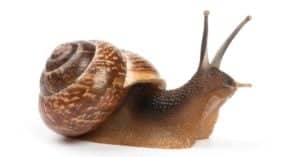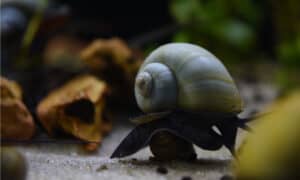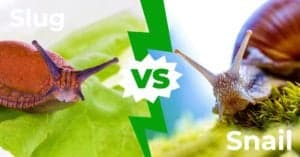At first glance, one may say that the apple snail and the mystery snail are the same types of snail because of their similar appearance. The information we’ve prepared will convince you that there are some important differences between the two!
The apple snail, which is the common name for Ampullariidae, is a family of large freshwater snails. The mystery snail is a type of apple snail, sometimes also called spike-topped apple snail, with the binomial name of Pomacea bridgesii.
While these two are similar in terms of anatomy, appearance, and diet, a few things can help you tell them apart. The main distinction is technical, but this technicality will point to some physical differences as well.
Comparing Apple Snails vs Mystery Snails

| Apple Snail | Mystery Snail | |
|---|---|---|
| Technical term | Family of snails | Species of snails |
| Size | 2-3 inches long (but it can grow up to as much as 6 inches) | 1-1.5 inches long |
| Colors | Lighter colors; yellow, green, brown | Darker shades; black, brown, blue |
| Diet | Predominantly herbivore | Omnivore |
| Lifespan | Up to 3 years at low temperature; around 12-16 months at temperatures from 77 F | 1-3 years |
The Key Differences Between Apple Snails and Mystery Snails
The key differences between apple snails and mystery snails are taxonomy, appearance, and diet.
Let’s explore these differences in detail!
Apple Snail vs Mystery Snail: Taxonomy
The apple snail is a family of snails, while the mystery snail is a species in that family. You can call a mystery snail an apple snail, but not the other way around. More than that, although their anatomy and appearance are similar, mystery snails never grow as big as apple snails, which, in fact, can sometimes grow as big as an apple.
Apple Snail vs Mystery Snail: Size
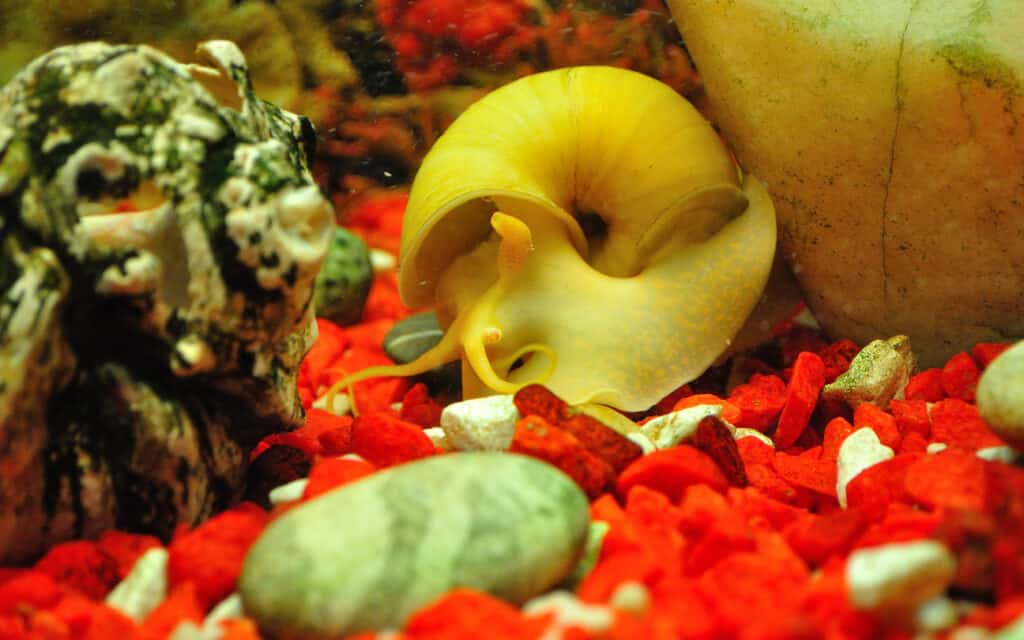
The mystery snail is much smaller than the other snails in the
Ampullariidaefamily.
©iStock.com/delobol
The mystery snail is much smaller than the other snails in the Ampullariidae family. It grows up to 1-1.5 inches in diameter. Other apple snails, however, can grow as large as 6 inches.
Apple Snail vs Mystery Snail: Color
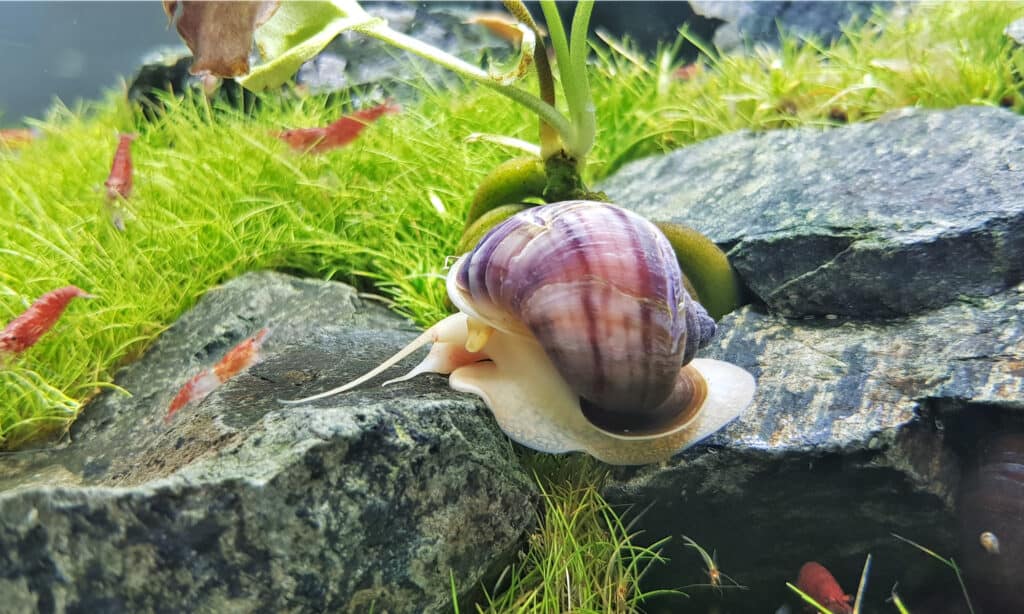
The mystery snail has white or dark slate feet.
©Arunee Rodloy/Shutterstock.com
Besides their size, color is another easy way to distinguish mystery snails from other apple snails. Mystery snails have darker colors, such as brown, black, or blue. They also have white or dark slate feet.
Other apple snails have lighter shades of gold, brown, pink, red, blue, and sometimes even purple or burgundy. Also, they have olive-green feet.
If you ever happen to see a dark-colored snail that’s giant in size, you can be sure it’s not a mystery snail, as it never gets past 1.5 inches in diameter.
Apple Snail vs Mystery Snail: Diet

Apple snails are generally considered an invasive species that can harm and disturb ecosystems.
©Guillermo Guerao Serra/Shutterstock.com
One of the most important things that can help people spot mystery snails among other apple snails is their eating habits. The mystery snail is predominantly herbivorous, while the other apple snails are omnivores or carnivores.
If you have a mystery snail, consider feeding it with cucumbers, carrots, peas, spinach, or zucchini. Before giving them to the snail, soften the vegetables in hot water. Another important thing to consider if you plan to have a mystery snail as a pet is calcium. Mystery snails require a diet rich in calcium; otherwise, the shell may crack or thin. There are calcium test kits that can help you check their calcium levels.
If you’re planning to get a different snail species in the apple snail family, please make sure it’s legal to own and doesn’t pose any risk to your health. Apple snails are generally considered an invasive species that can harm and disturb ecosystems. They can also spread diseases because of their intestinal flukes and rat ringworms. These snails have a unique appearance; that’s why pet owners often prefer them as pets. But considering the risks, the mystery snail would be a much better and safer choice for a household.
Similarities Between Apple Snails and Mystery Snails
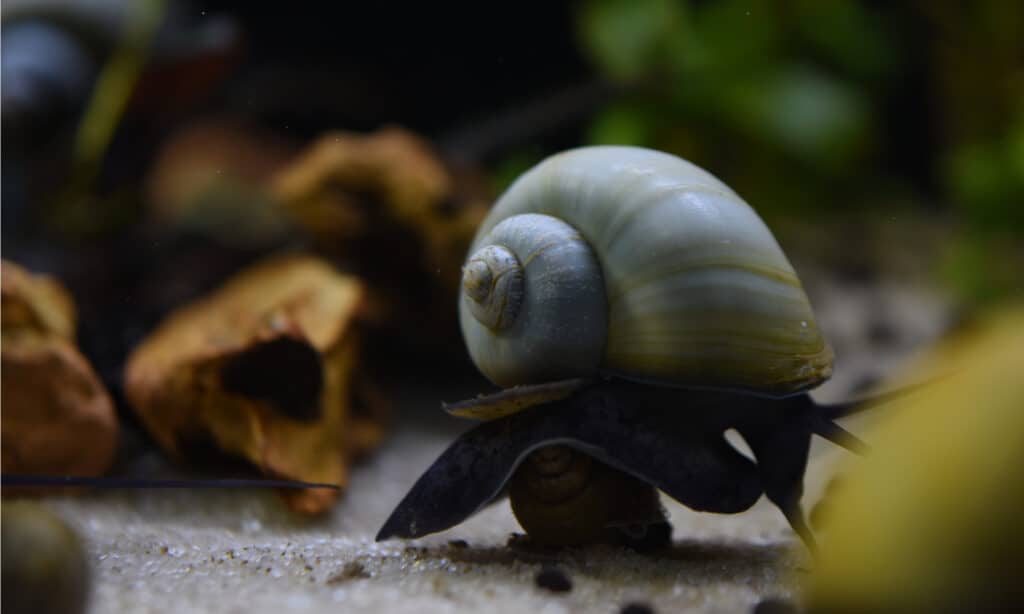
The mystery snail has gills and lungs.
©MHawkinson/Shutterstock.com
Anatomy
The apple snail and the mystery snail have gills and lungs, so their respiration is branchial. These snails are called amphibious. This type of respiration makes it easier for them to leave the water for short periods and look for food. Moreover, they have siphons that help them breathe – they can use the siphon for breathing underwater by extending it above the water.
Apple snails and mystery snails have an operculum, a complex structure functioning as a trap door. It helps the snails seal the entrance to the shell so that they don’t dry out during dry periods while they hibernate in the mud. If you own a snail, this operculum will be very useful to check if your snail is fine. If the snail is not okay, the operculum will not close properly. If the snail dies, it will fall off completely.
One particularity that the mystery snail and the apple snail have is the complexity of their eyes; they can fully regenerate an amputated eye through the mid-eyestalk.
Breeding
The apple snail and the mystery snail are gonochoristic, meaning that breeding requires both males and females.
How to tell if your snail is a mystery snail?
If you have an apple snail, but you’re not sure if it’s a mystery snail specifically, here’s what you need to check:
- The size: mystery snails don’t grow bigger than 1.5 inches;
- It has darker colors, such as black, brown, and dark blue;
- You’ll often notice that the tank is clean from herbs and algae, as the mystery snail loves eating them.
The Apple Snail: An Invasive Species
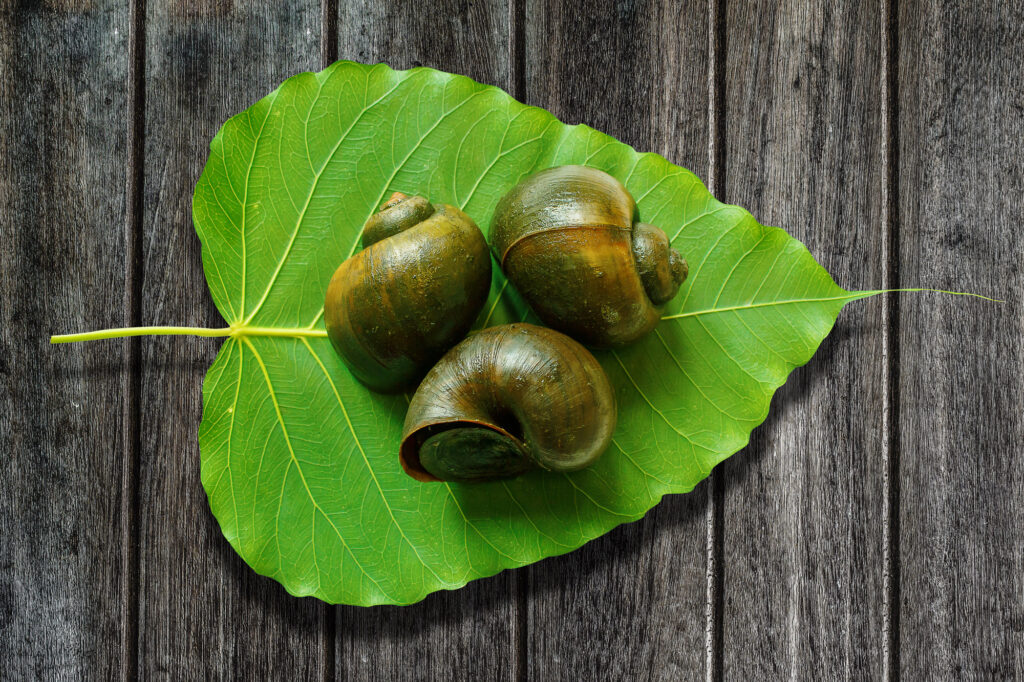
The apple snail is considered an invasive species.
©Jiffy Avril/Shutterstock.com
The apple snail, in general, is considered an invasive species. Pet owners usually prefer apple snails because of their appearance and rapid growth, but they are legally forbidden to be owned in the United States. Because of their rapid growth and aggressive feeding style, they can easily alter the ecological ecosystems and their nutrient dynamics.
It is not known how apple snails arrived in the United States, but they were supposedly brought by the aquarium trade industry. As a result, the agricultural industry in the United States is now in danger. It is known that apple snails present a severe threat to crop production – rice crop production throughout Asia has been seriously damaged by the apple snail.
A study shows that the golden apple snail found in the wetlands in Thailand is associated with a complete change in the ecosystem, including the absence of aquatic plants. On the other hand, among other apple snails, the mystery snail specifically is not dangerous for crops or human health and can be easily kept as a pet.
The photo featured at the top of this post is © MHawkinson/Shutterstock.com
Thank you for reading! Have some feedback for us? Contact the AZ Animals editorial team.



